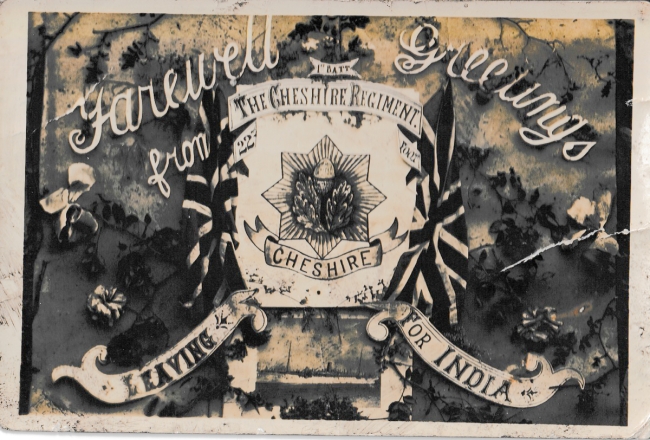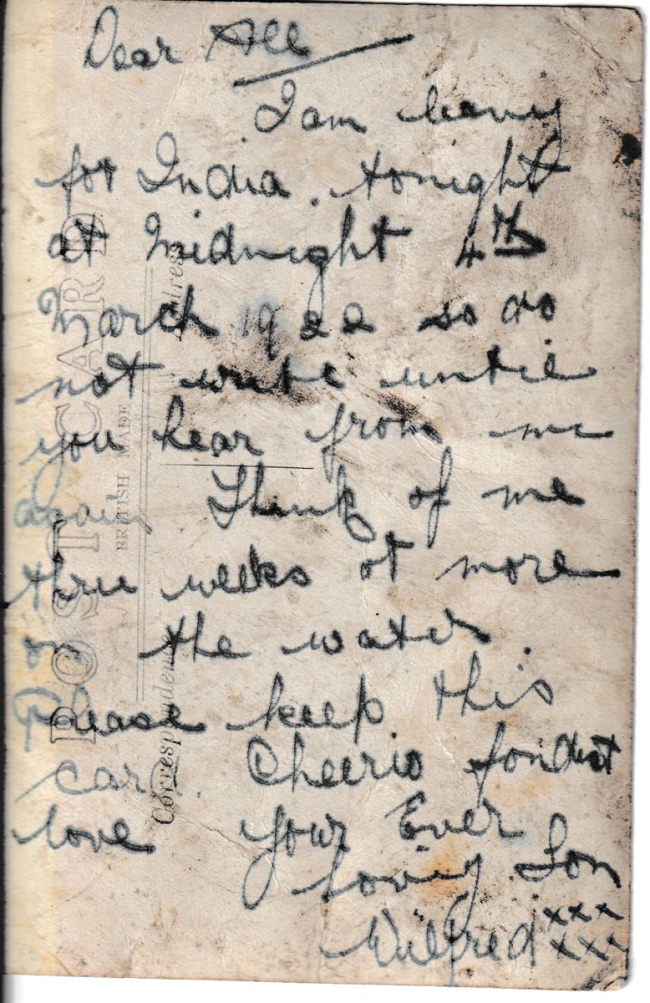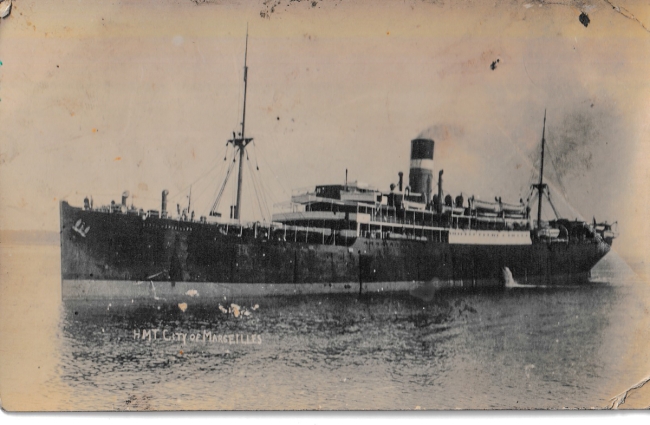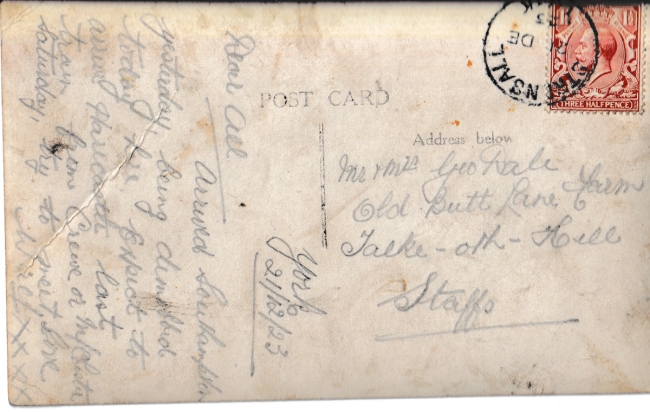In mid-February I posted pictures of some beautifully embroidered post cards (See:Embroidered Postcards). There were two other post cards, but since they were different in nature and from a different sender I didn’t include them in the earlier post. Where the earlier posts were from someone called Arthur, these are from Wilfred who I believe was my father’s half brother. They seem to have been sent to my grandfather (who I never knew) and grandmother (the Mary to whom the earlier embroidered post cards were addressed).
One of the postcards shows a ship called the HMT City of Marseilles, a steam merchant built by Palmers Shipbuilding & Iron Co Ltd, Jarrow and completed in 1913. The owner was Ellerman Lines Ltd, London. Usually British ships are called “HMS” (His/Her Majesty’s ship, which seems to be restricted to military vessels). This one is called “HMT”. I was not familiar with this designation and looked it up. It stands for “His/Her Majesty’s Transport”).
Completed in January 1913. During the First World War, the ship was shelled by a German U-boat but escaped.
On 21 January 1943 the City of Marseilles stranded near Batticaloa, Ceylon. Later refloated but broken up in 1947.
On the morning of 6 January 1940 the City of Marseilles was damaged by a mine, laid on 12 December 1939 by U-13, 1.5 miles southeast of Tay Fairway Buoy, River Tay. The ship had just taken a pilot aboard when the mine exploded under her bridge, stopping the engines and causing a list of 10 to 15° to starboard. The crew began to abandon ship, but two lifeboats had been destroyed by the explosion and another capsized during launch, throwing the 14 occupants into the water. One crew member was lost. Screened by a Hudson aircraft (224 Sqdn RAF), the survivors were picked up by the pilot cutter, a RAF crash launch from Tayport and the Broughty Ferry lifeboat Mona and landed at Broughty.
The abandoned City of Marseilles was boarded by crew members of HMS Cranefly (FY 539) (Skipper H.B. Soames, RNR), HMS Sturton (FY 1595) (Skipper W. Buchan, RNR) and the harbour defence patrol craft HMS Suilven and soon thereafter her officers and a pilot returned to the vessel aboard Mona. The next day, the vessels towed her to Dundee where temporary repairs were made. The ship then continued to the Clyde for repairs and returned to service in April 1940. (Uboat.net).




